Interview: Emon Haoliners Discusses Entry into Japan as Chinese Animation Brand
Jun 22, 2017 8:59 AM (PDT) by arsonal | Forum Discussion
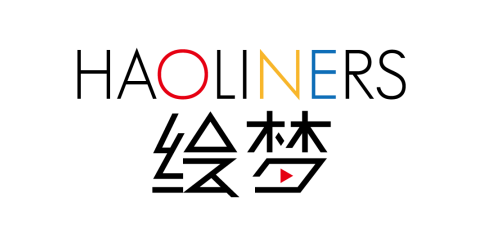
In October 2015, Shanghai-based animation production brand Haoliners Animation League opened an office in the Kichijoji suburb of Tokyo. The production studio named Emon is Japan's first animation studio established by a Chinese investor. In February 2017, MyAnimeList met with Widad Noureddine, Emon's general manager of international media operations, in Kichijoji as part of a feature story on Chinese animation. This is a transcript of that meeting.
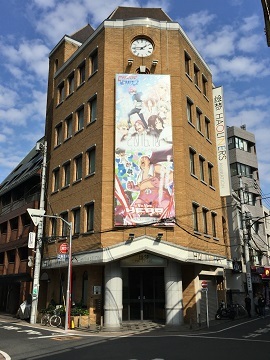 How did you come to start working at Haoliners?
How did you come to start working at Haoliners?I came back to Japan around the same time of the starting of Emon Tokyo in October 2015, and I met [former Gonzo producer] Shouji Murahama. At that time, I told him I used to work in the anime industry in France. He told me they had just started the studio, and that if I was interested I was invited to work with them. I thought it was a good opportunity, so I accepted. I was always interested in working in the anime industry in Japan.
What kind of work were you involved with in France?
I used to work in sales of anime DVD and Blu-ray, as well as manga, with a company that used to work with Bandai Visual. The French anime market is kind of complicated right now because, like everywhere else, DVD and Blu-ray sales are not as big as they used to be. Because a lot of people now consume animation through digital streaming, sales of DVD and Blu-ray have become difficult.
Is that trend in consumption generally the same elsewhere overseas?
We can see that it's also kind of difficult in other countries, whether it's the United States, Italy, or even Japan. Germany is the only market that is doing well in DVDs and Blu-rays. Their market is similar to Japan. Japanese publishers will put one or two episodes in one disc, so if you have a long series, you could end up with 20 discs.
The German market is like that because they don't put too many episodes in one DVD. This is contrary to the French and American markets, where they try to put everything in one package. People don't want to buy one disc at a time. They want everything at once, so you have one or two packs for a 24-episode series.
What differences or similarities do you see between the animation industry in Japan and in France or Europe?
What I can actually see right now is that the market is shifting. If I have to compare with the French one, I wouldn't be able to compare because in France we just buy and sell [anime titles]. In Japan, they mainly produce, so the two markets are different. The French market depends on what's happening in Japan. With Chinese involvement, that's the big shift in this industry in Japan right now.
What are some of the examples of Chinese involvement in the industry?
Our company, Emon Haoliners, is the biggest example I can give you. Nobody in China had ever created a studio in Japan. That means we are the first one. We knew for a long time that Japanese studios used to create some titles in China through outsourced production, but Chinese people investing in Japan and doing everything in Japan is like the complete opposite. Right now, China has become strong enough to produce their own content in Japan.
Do you think that's a shift driven by producers, or is it a demand by customers for Chinese companies to invest in Japan?
I think there is demand from the Chinese side. Our company is working with Tencent, a major leader in the Internet industry in China. Tencent has a big catalog of webcomics which are very popular, and they would love to see these works adapted into animation. If you want anime, you have to produce it in Japan. Creating Emon Haoliners in Japan means having your works being animated by Japanese staff so that people will recognize them as a great works.
Japanese people are very happy about that because the industry is not doing so great. We have a lack of animators, so if people come and give funding to projects, there's work available. That's a good thing for the Japanese industry to have people coming and investing money in anime projects.
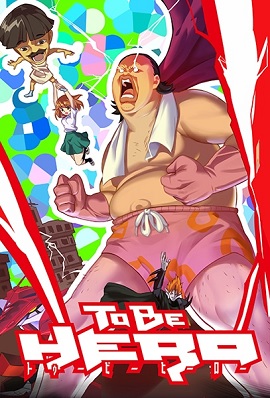 What do you think is the ratio of the work done between Emon Tokyo and Emon China?
What do you think is the ratio of the work done between Emon Tokyo and Emon China?That really depends on the anime. Some of our titles are 100 percent made in Japan, like Cheating Craft and both parts of Reikenzan. Others, like Bloodivores and Hitori no Shita: The Outcast, are made in Japan mainly but also co-produced with Korean studios. We also can't say our works are 100 percent Chinese.
Right now, the only 100 percent Chinese product is To Be Hero, which is created by Li Haolin at Emon China. We do not say that all our works are done in China because that is not true. Some of them are done here [in Japan]. We have studios not only in China, but also in Japan and South Korea. Our goal is to work with all these studios together so that our work helps our company's employees and studios together.
Between your studios in South Korea and Japan, which one is bigger?
We don't do the same things [in both locations]. Here in Japan, we produce, but we also prepare everything else like business project and business development. The South Korea studio is more like a production studio, so they will only do the drawing and related tasks. Here in Japan we have the digital department for CG production, traditional anime production, strategy and business development, as well as our figurine company Emon Toys. Each studio has different plans.
Is there anything unique that Emon Tokyo has that other Japanese animation studios may not have?
What's unique is that Emon Tokyo works fully with Japanese and Chinese staff. Coordination with our office in Shanghai and Japan is easily handled. Here, most of the staff are Japanese, so our production are mainly made by Japanese artists. We have a great team working on this, and our people have a lot of experience in animation.
It's also good that a lot of people are coming in and working to help us on our projects. We work just like any other studio in Japan and also work with staff from other studios.
You recruited people from other studios?
Of course. As you probably know, the industry now doesn't operate with people working in one place and not moving. People go and work with a lot of studios at once; many are freelancers. When they can help on one project, they go there. When they have another project, they switch over to that project. There are a lot of people coming and going back to other projects.
We also have a lot of projects going on right now. This year, we have more than ten projects underway under the Emon Haoliners brand. We cannot produce ten works in only one studio. We don't have enough people to do that, and I don't think that's possible. Our works are not done by Emon only. We work with other Japanese studios who help us produce and make them.
What are some of examples of the differences between Chinese and Japanese production culture?
It's just small stuff, but Chinese people use hanzi characters for example. When translating into Japanese, the translated name may not have the same meaning. Sometimes you just have to change the kanji in Japanese, but it's very different for the overseas market. You have to adapt everything [for overseas audience], so the title and [character] names may change. Sometimes you have to figure out how to make everything go smoothly.
It's very challenging because you have to check the aspects of the original work to make sure the meaning is not lost. Most of these works are coming from light novels or webcomics. In the legal area, dealing with a work of Chinese creation in China is not handled the same way as it is in Japan. Matters related to rights and licensing are discussed a lot.
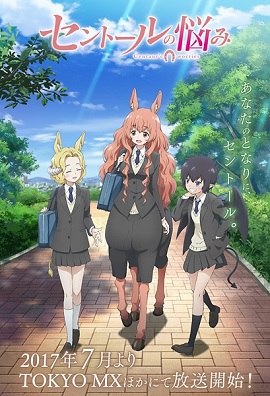 When adapting webcomics or light novels, is there cooperation with creators in China similar to how it is done in Japan?
When adapting webcomics or light novels, is there cooperation with creators in China similar to how it is done in Japan?Yes. Although we handle light novels and manhua from China, we also adapt Japanese video games and manga. [The process] depends on who is in charge [of the original work]. For example, if the original work is a Shueisha or Kadokawa manga, we just do it the same way because Japanese people in our company produce it in the same way as those companies. It's not necessarily easier just because the two parties are Japanese, but the process is done in a more traditional way.
With Chinese works, everything is handled by our company in China. They take care of the rights and the adaptation, and then when everything is settled they just give us what we have to do and what we can do to adapt this work or manga. We'll go back and forth to see whether we can produce some parts a certain way. They'll come back with changes and make other recommendations.
Sometimes there's a language barrier. Chinese people work in Chinese, and we work in Japanese. We're able to work together now, but at first it was really challenging because Japanese people are not used to working with Chinese people. Today, our communication is very efficient because we have Chinese and Japanese creators working side by side in our Tokyo office as well as our Chinese office.
What has been the most fun experience?
The fun part is that I can see how the Japanese anime market is evolving. Most people know the anime market is not doing great, but foreign investment in the anime market is helping a lot of studios. We're seeing the whole market shift. People used to consider Japan as the top creator of animation, but what I see right now is that China has a lot of potential. I consider it like the new El Dorado of animation because a lot of great animators are right now working in China. I'm very happy to be in the company because I always wanted to see how foreign companies animate their works in Japan.
Some time ago in France, there was one company called Ankama who tried doing that. They did the same thing, but at the time it didn't work. It's very challenging for foreign companies to come and invest in the Japanese market and try to animate their own works. Tencent now has their own catalog, so a lot of people in China want to have their famous Chinese comics animated. Having people do that here and making it real is a very good thing. It's something that I really appreciate.
What experiences have been the most challenging?
The most challenging thing is dealing with the image that Chinese people only copy. People still think that things that are not produced in Japan are not anime. Of course, all our anime are mainly produced in Japan. It's also true that the origin of the works is not Japanese, but they are animated by Japanese people, in the Japanese way, at a Japanese studio.
I think people who say generally that China is not good is kind of restricted. That could mean if one day an American, French, or other person wants to create something in Japan, nobody will recognize that work even if it's made by Japanese people. Right now we should be more happy that other people are doing more stuff. They should be proud that there are people who can do something that's different from the Japanese.
Just because it's different, it doesn't mean that it won't be good. It also doesn't mean that because it's different, it will be good. We should give them a chance. There is anime for many kinds of people. You may not like it, but there are others who will. We should be more open with other works.
What do you think are the genres that are more popular in the Chinese market?
The Japanese and Chinese markets are not very similar in this regard. The Taiwanese market is the one that is more similar to the Japan market because they also like the moe genres and other things that are popular in Japan.
The Chinese market is more like a shounen market. Shounen and action titles are very popular there. In this regard, it's similar to the continental European market. Sure, they may have similar interests in titles like Gundam, but works like Naruto and One Piece are very popular. That's why Chinese webcomics are mostly action-based.
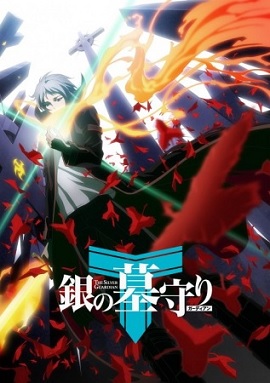 What's the unique thing about a work like Gin no Guardian?
What's the unique thing about a work like Gin no Guardian?The thing that is interesting about Gin no Guardian is that the main character is not the hero. He's the like the last boss of the game, and all the players have to beat him. That's something I haven't seen before. Usually the hero is the main protagonist, and they have to beat the boss.
Are there things that had to be changed in Gin no Guardian when adapting it for the overseas market?
Yes, we had to adapt some things in Gin no Guardian because it's not possible to present the work in its original form. In order to make it into a 12-episode series, we had to change some content to make the anime go smoothly. That's where the Japanese expertise comes in. They can see which part is interesting and which part is not necessary. The Chinese side may also say they actually want the unnecessary part, so we do try to find a compromise between the two. We also have to deal with references. For example, in anime and manga, when you make references to other works, you have to have the rights, so we had to make some changes.
Is it common for Chinese works to reference each other?
Yeah. They really do that often because that's something they like. Most of the creators are anime and manga fans. Of course, putting stuff from things they like is like giving an homage. You can often find often those kinds of references in Chinese works. For example, you will find other characters from works by Haoliners in Spiritpact.
When you market works from Haoliners, is there a focus on any specific distribution medium?
Actually, the first medium is streaming and simulcasting. Some our works, like To Be Hero or Cheating Craft, are originally produced as ten-minute animation. This is something new in the anime market. People are used to the television-length episodes in 25 and 30-minute time slots.
In China, most of animation titles are around ten minutes long because it's the best suited for their watching habits. People can watch it while on the train or drinking coffee. They wouldn't drink coffee for 20 or 30 minutes. Right now, the smartphone market is expanding in China. Ten-minute anime is a response to that market. Having to watch a 20-minute episode on the train might be too long. People will ask, "Do I have enough mobile data? Will I have battery left after?"
All our anime are broadcast on the same schedule in China as in Japan. Domestically, we work with television stations like Tokyo MX. Overseas, we work with Crunchyroll as our streaming partner. You can also watch them with the Chinese dub if you watch on Chinese platforms.
Are most of the anime in China broadcast on the Internet, not on television?
Television broadcast is kind of complicated because there are a lot of regulations. But also consider that right now, the most used media is the Internet, so broadcasting on the Internet might be enough.
Of course, it's still good to have works broadcast on television, but fewer and fewer people are watching television these days. If an anime is broadcast on the Internet, it can be watched on a computer or a tablet from anywhere in the world. In China, if people want to look for anime, they don't go to the television. They go to the Internet.
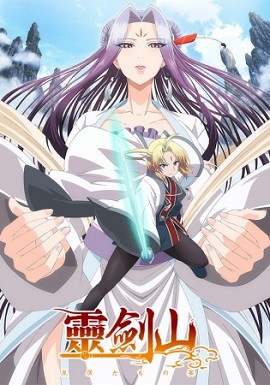 The DVD and Blu-ray market is still something interesting that we want to do because there are people who still want to see those anime on discs and own them. That's what we do with titles like Reikenzan. The DVD and Blu-ray market is still important, but the growth is on the Internet.
The DVD and Blu-ray market is still something interesting that we want to do because there are people who still want to see those anime on discs and own them. That's what we do with titles like Reikenzan. The DVD and Blu-ray market is still important, but the growth is on the Internet.How did you come about partnering with Studio Deen for a work like Reikenzan?
We work with a lot of other studios. We're not here to say that our studio will only create our own works. The idea is we are here to also help the market by investing other studio's anime works. Having your works animated in other studios is building that trust between your company and Japanese companies. That's very important for us to let other studios know that we are not here to take their market. We are here to help with them. We want to work together and follow the same strategy and philosophy.
If Haoliners were to be known for something, what would you want it be?
I would be happy if someone hears the name Haoliners and say, "Oh, you're the guys who did To Be Hero." To Be Hero is something that is very different from other works in the past. Even though it's a short anime, it has originality. If you like anime, you will definitely love To Be Hero because there are references which will make you remember other works. It's something that is for kids, but also for adults.
I'm not young anymore. (Laughs.) Right now, I'm looking for something that's talking to me as an adult. Shounen titles are generally for young adults, so I don't find myself in that kind of anime anymore. That's why a series like To Be Hero is talking to me because I can understand those points of view. It was made by people who love anime just like me, and they know what to write.
Original reporting by arsonal for MyAnimeList. Interview has been edited for clarity.
Related Database Entries
Related News
- Focus: As Streaming Booms, China Sees Growing Demand for Japanese Animation AMP
- May 16, 2017 10:00 PM (PDT) by arsonal
- Chinese Animation 'Huyao Xiao Hongniang' to Broadcast in Japan AMP
- May 26, 2017 9:40 PM (PDT) by Vindstot
- Fall 2016 Simulcast [Update 11/20] AMP
- Sep 30, 2016 2:12 AM (PDT) by Snow
- 'To Be Hero' Anime Series' Second Project Announces Japanese Broadcast Information AMP
- May 10, 2018 2:39 AM (PDT) by tsubasalover